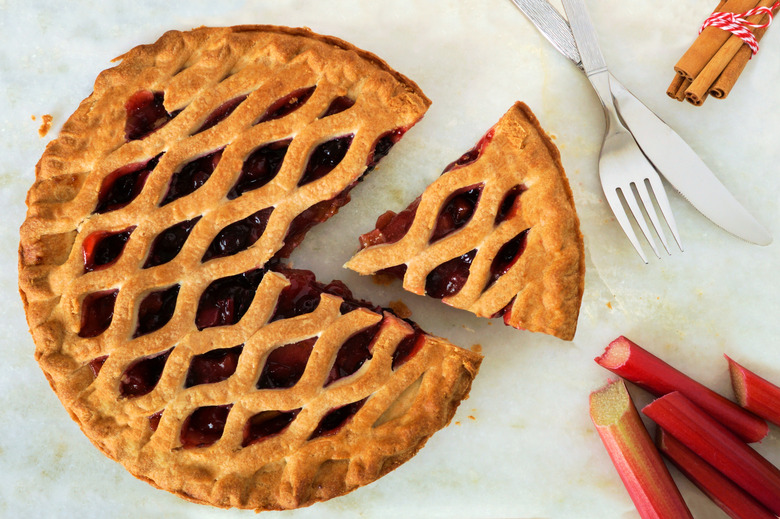How Do I Find The Simplest Form Of A Mixed Number?
A mixed number is any expression that combines a whole number equal to or greater than 1, plus a fractional reminder. For example, 1 5/8 and 3 2/3 are both mixed numbers. Usually, a mixed number is the simplest way to express an improper fraction, in which the numerator or top number is bigger than the denominator, or bottom number. But you still have to pay attention to the fractional remainder part of the mixed number. If it's an improper fraction itself, or if it's not expressed in lowest terms, you can simplify the entire mixed number.
Mixed Numbers Containing Improper Fractions
Mixed Numbers Containing Improper Fractions
Take a look at the fraction part of your mixed number. If the numerator of this fraction is higher than the denominator it's an improper fraction, and you can simplify the entire mixed by working the division that improper fraction represents.
Example: Consider the mixed fraction
\(4 \enspace \frac{11}{3}\)
1. Work the Division Indicated by the Fraction
Work the division represented by the fraction part of your mixed number; in this case, 11/3. Don't express the answer as a decimal. Instead, calculate it only to the point of a whole number and any remainder.
\(\frac{11}{3} = 11 ÷ 3 = 3 \text{ remainder } 2\)
2. Add the Whole Numbers Together
Add the whole number from Step 1 to the whole number component of your original mixed number. In this case, the whole number from the original mixed number was 4, so you have:
\(4 + 3 = 7\)
3. Set the Remainder as a Fraction
Set the remainder from Step 1 as a fraction, using the same denominator as the original mixed number. To continue the example, your new fraction is 2/3.
4. Combine the Whole Number and Fraction
Reunite the two parts of your mixed number: The whole number, which is now 7 (from Step 2) and the fraction, which is now 2/3 (from Step 3). So your new mixed number is
\(7 \enspace \frac{2}{3}\)
TL;DR (Too Long; Didn't Read)
Check your work by converting the new mixed number, 7 2/3, to an improper fraction. Then convert the original mixed number, 4 11/3, to an improper fraction. Because the two numbers work out to the same improper fraction, 23/3, your answer is correct.
Mixed Numbers Not in Lowest Terms
Mixed Numbers Not in Lowest Terms
Consider a mixed number whose fractional component isn't an improper fraction – but it's not in lowest terms, either. Some examples of this are 2 11/33 or 6 4/8. In each case, the numerator and denominator of the fraction both have at least one common factor greater than 1.
Consider the latter case, 6 4/8, as an example. Reduce the fraction portion to lowest terms by identifying, then factoring out and canceling, the greatest common factor.
1. List Factors
Make a list of the factors for the numerator of the fraction, followed by a list of factors for the denominator:
Numerator: 1, 2, 4
Denominator: 1, 2, 4, 8
2. Identify the Greatest Common Factor
The greatest common factor, or the greatest factor present in both numbers, is 4.
3. Divide by the Greatest Common Factor
Factor 4 out of both the numerator and denominator of the fraction or, to put it another way, divide both numbers by 4. This gives you:
\(\frac{4 ÷ 4}{8 ÷ 4}\)
Which simplifies to:
\(\frac{1}{2}\)
Because you divided both numerator and denominator by the same amount, you haven't changed the value of the fraction; but you have written it in simplest terms.
4. Include the Whole Number
Remember that you were originally dealing with a mixed number. You only temporarily ignored the whole number component in order to deal with the fraction. So, add the whole number back in to get a final result of
\(6 \enspace \frac{1}{2}\)
References
Cite This Article
MLA
Maloney, Lisa. "How Do I Find The Simplest Form Of A Mixed Number?" sciencing.com, https://www.sciencing.com/do-simplest-form-mixed-number-6883780/. 30 November 2020.
APA
Maloney, Lisa. (2020, November 30). How Do I Find The Simplest Form Of A Mixed Number?. sciencing.com. Retrieved from https://www.sciencing.com/do-simplest-form-mixed-number-6883780/
Chicago
Maloney, Lisa. How Do I Find The Simplest Form Of A Mixed Number? last modified March 24, 2022. https://www.sciencing.com/do-simplest-form-mixed-number-6883780/
